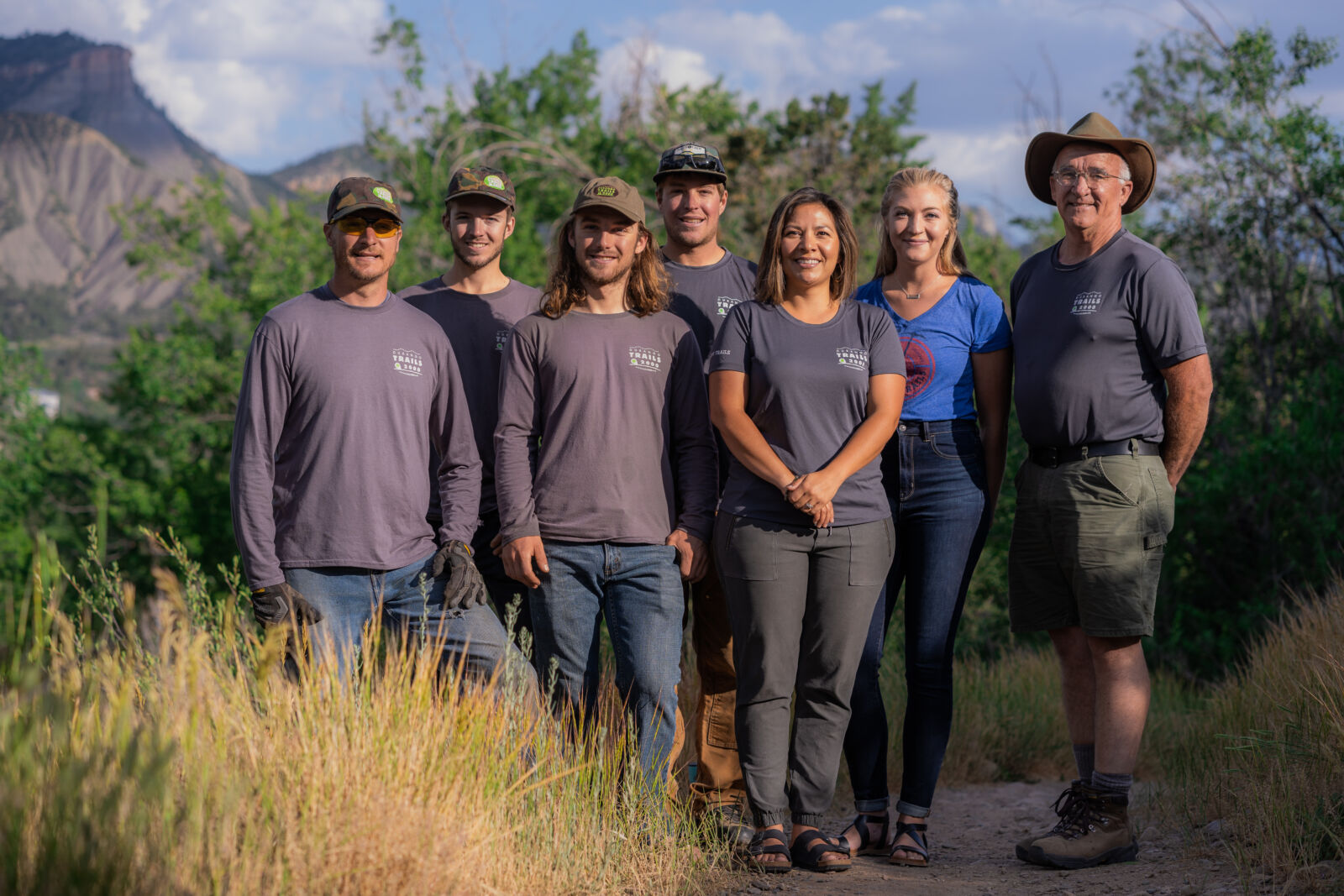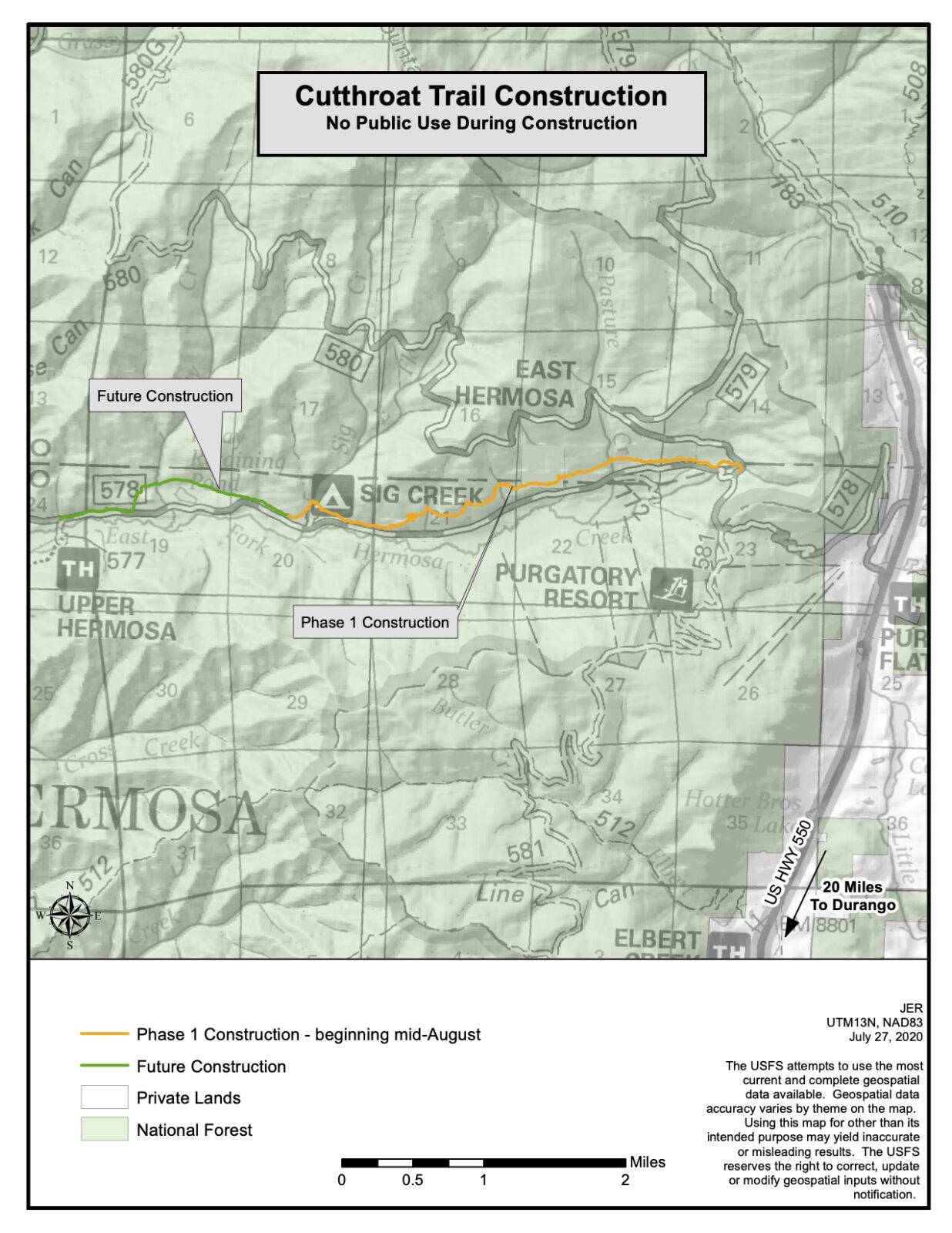Guest blogger Lorena Williams is the Partnership and Public Affairs Specialist on the San Juan National Forest.
In mid-July, a cross-disciplinary group from the San Juan National Forest hiked a stretch of what will soon be known as the Cutthroat Trail, a roughly 5.5-mile trail situated above the East Fork of Hermosa Creek. This new multiple-use trail will be the first on the San Juan National Forest designed for E-bikes, but will also be accessible to hikers, horseback riders, and mountain bikers wanting to explore the Hermosa area.
The Columbine District’s Ranger, the Trails Foreman, and a Rangeland Management Specialist hike a stretch of the soon-to-be Cutthroat Trail.
On an overcast summer day, a district ranger, two rangeland management specialists, a wildlife biologist, a trails foreman, and a partnership coordinator hiked three miles of the soon-to-be Cutthroat Trail to discuss the trail’s construction, slated to begin in mid-August. This cross-disciplinary group’s goal was to decide how to best serve both the land and the trail’s user groups. The Cutthroat Trail, named after the endemic Colorado River Cutthroat Trout, will not only provide a wide variety of recreation opportunities, it also runs through an active grazing allotment—a prime example of the U.S. Forest Service’s mission to manage forests for multiple uses and to meet the diverse needs of people.

Southwest Conservation Corps (SCC) Crew 408 poses in the Pagosa Ranger District of the San Juan National Forest. The SCC will be helping to construct the Cutthroat Trail.

Two members of SCC Crew 411 crosscut a fallen tree on the Grand Mesa Uncompahgre and Gunnison national forests. This experienced crew is well-prepared for Cutthroat Trail construction.
It has taken a lot of time and effort to make the Cutthroat Trail a reality. This project is made possible with support from the San Juan Stewardship Fund (one of the National Forest Foundation’s Ski Conservation Funds), which began in 2017 as a partnership between Purgatory Resort, the NFF, and the San Juan National Forest. For the Cutthroat Trail project, partnerships have expanded to include Southwest Conservation Corps, Durango Trails, and Cottonwood Consulting, who participated in planning efforts and will be joining forces to break ground in August.
Three Columbine Ranger District employees discuss the installation of a cattle guard on the Cutthroat Trail.

Three members from SCC Crew 408 pose with their tools on a fallen tree.
The Cutthroat Trail will be built in two phases. Phase One (2020) will construct the trail from Cascade Divide Road to Sigg Creek Campground. Phase Two will continue from Sigg Creek to the Upper Hermosa Park Trailhead. Agency specialists and partners worked together to design a sustainable trail alignment that offers resource protections, reduces impacts on the East Fork Hermosa area, provides new opportunities for trail users, and improves public safety by providing an alternative to riding or hiking the road between the ski area and Upper Hermosa Park.

Durango Trails is joining the construction effort with a crew of sawyers.


